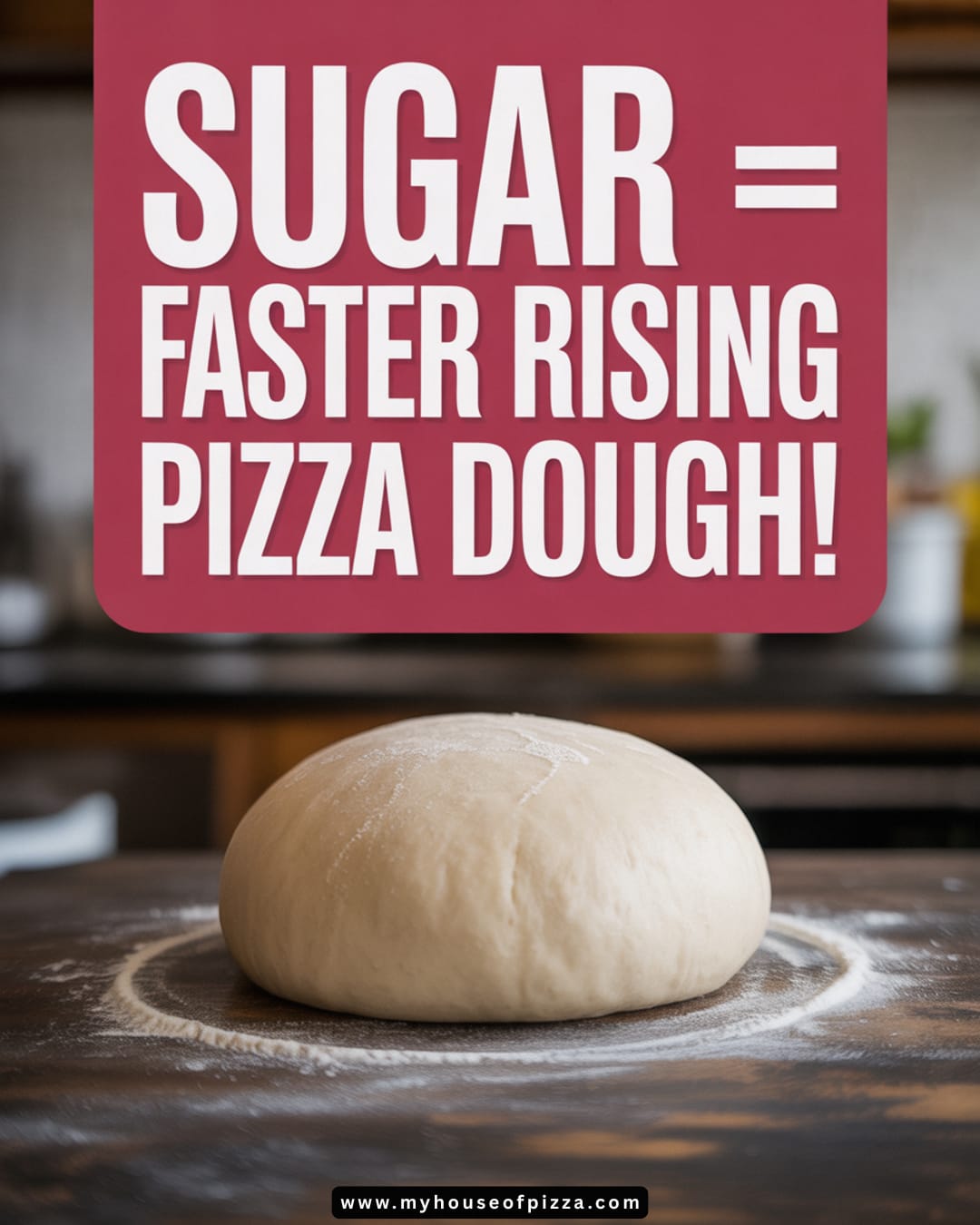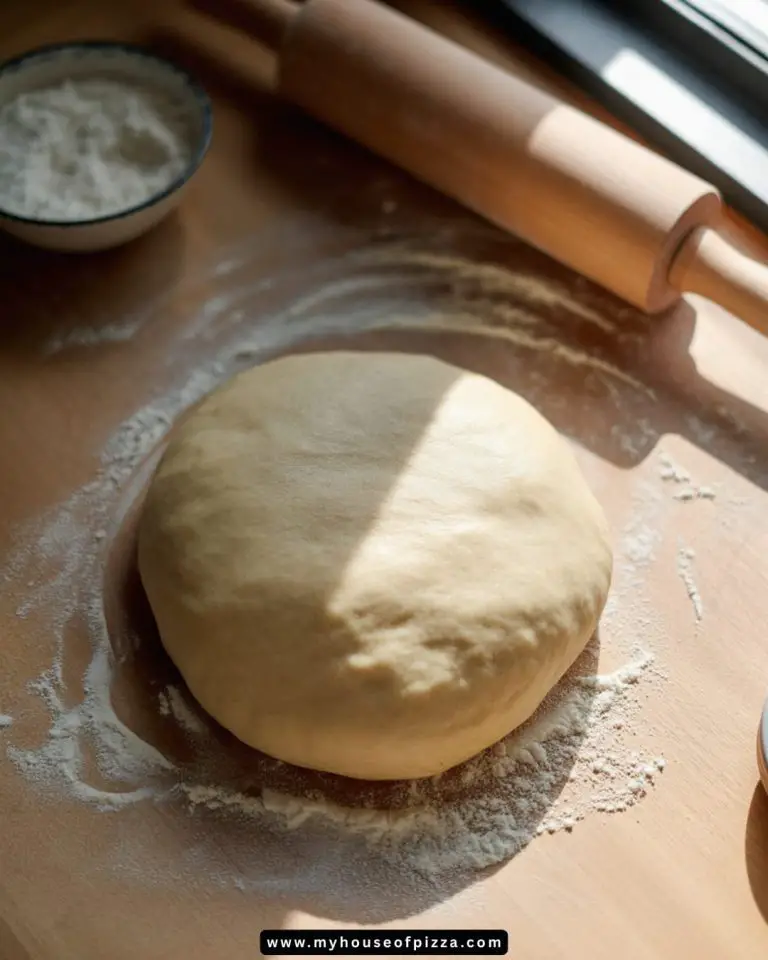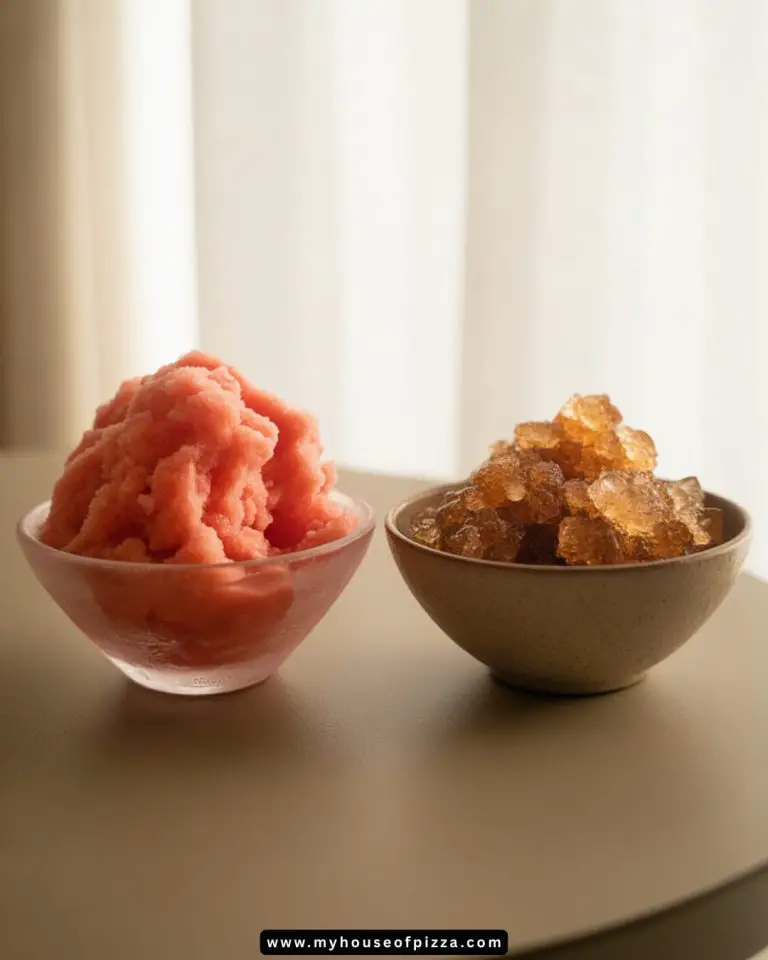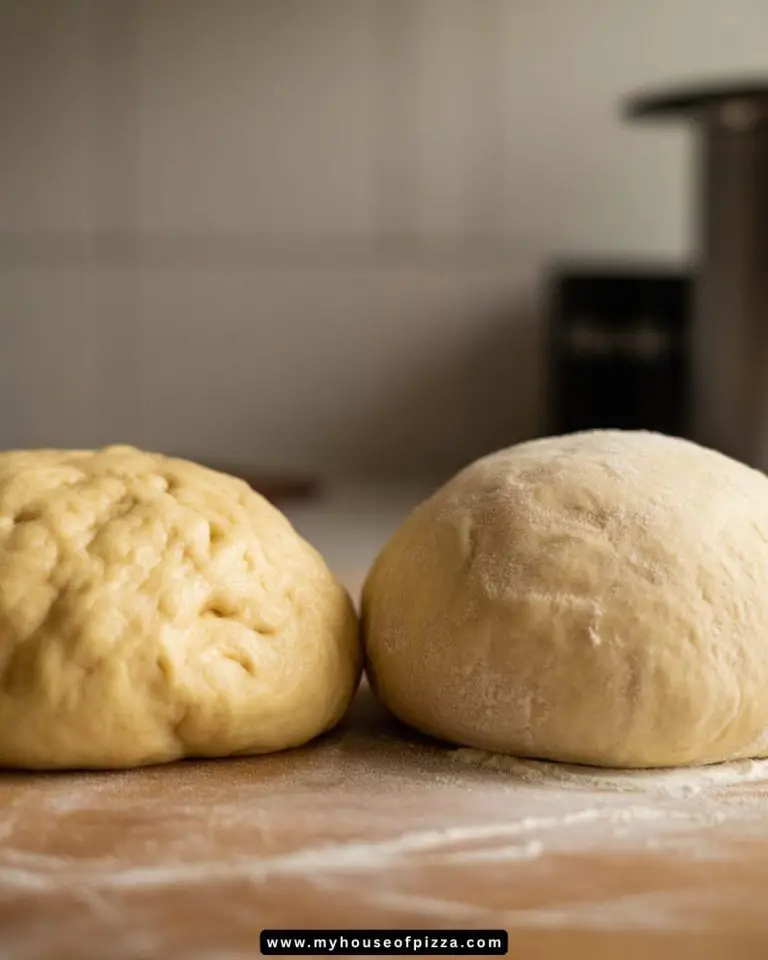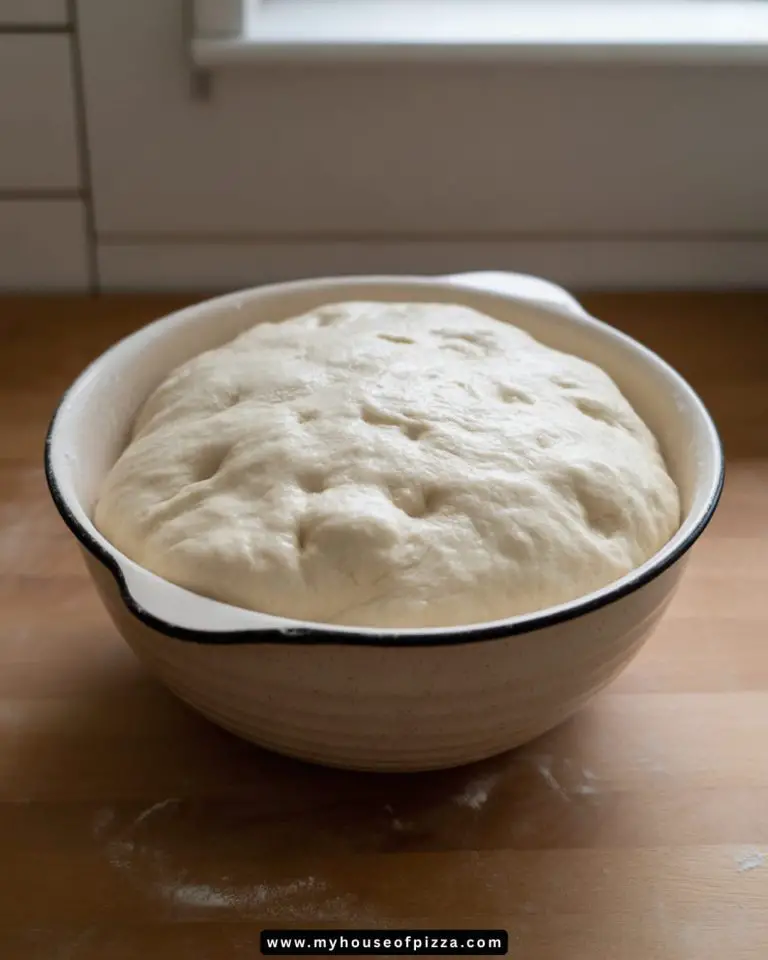How Sugar Speeds Up Pizza Dough Rise Times
Every home pizza maker has wondered why sometimes their dough puffs up quickly and other times it just sits there, stubborn and slow. You follow the recipe, knead with care, and still, the rise is unpredictable.
Here’s the trick: adding a little sugar to your pizza dough can actually speed up how fast it rises. But there’s more to it than just dumping in a spoonful of sweet stuff. Let’s get into how sugar works its magic, how much to use, and why it’s not always as simple as it sounds.
How does sugar actually speed up pizza dough rising?
Yeast needs food to do its job. In pizza dough, yeast eats sugars and releases carbon dioxide, which is what makes the dough rise and get airy.
When you add sugar to your pizza dough—up to about 5% of your flour’s weight—it gives yeast extra fuel to burn through. This means the yeast can work faster, making your dough puff up more quickly. But there’s a catch. If you go over that 5% mark, sugar actually starts to slow things down. Too much sugar soaks up water, leaving the yeast thirsty and sluggish.
So, a little sugar helps, but more is not better. Stick to the sweet spot.
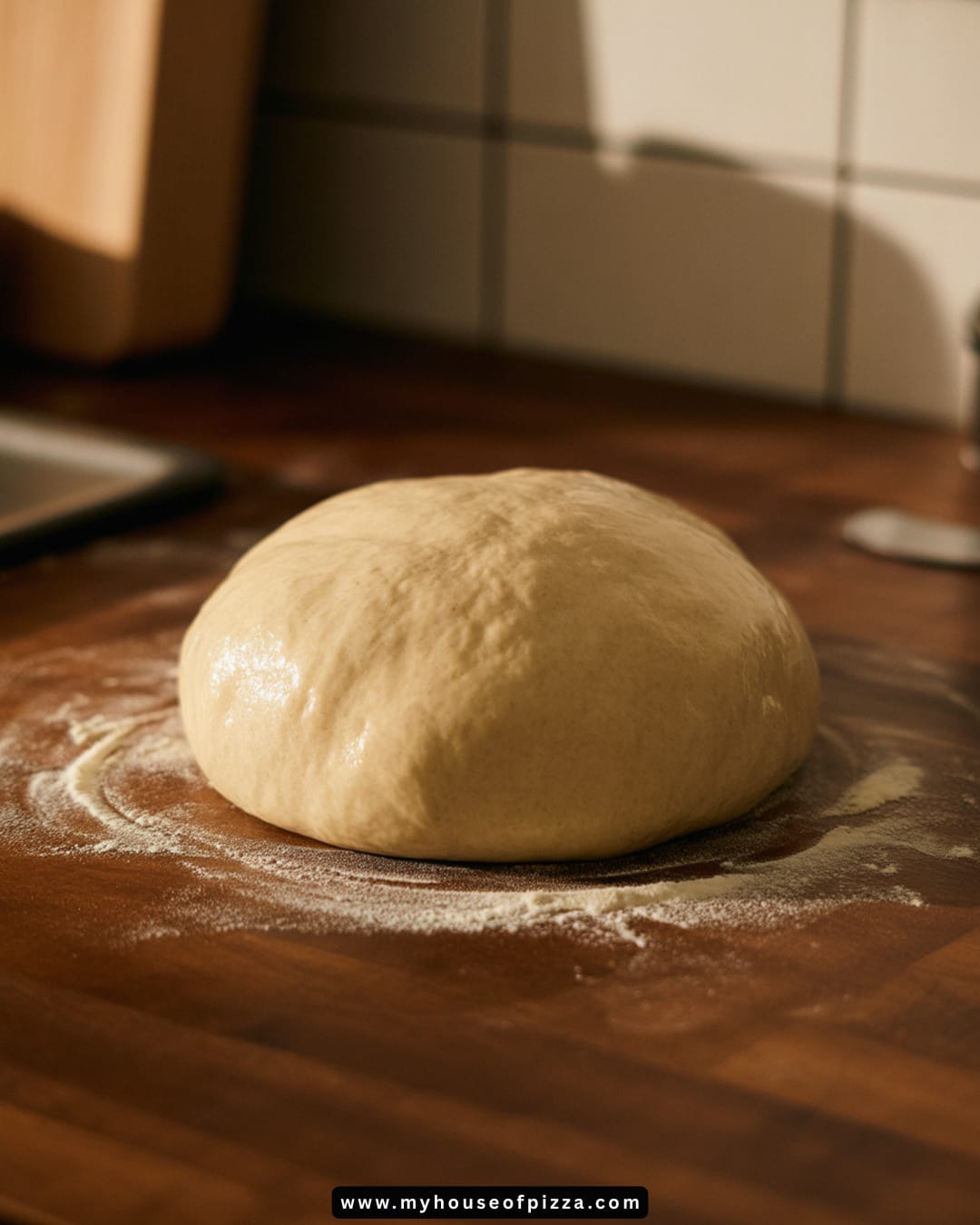 A fully risen pizza dough ball on a floured wooden counter, showing visible air bubbles and a smooth, glossy surface in a warm kitchen setting.
A fully risen pizza dough ball on a floured wooden counter, showing visible air bubbles and a smooth, glossy surface in a warm kitchen setting.Is sugar even necessary for pizza dough to rise?
A lot of people believe you have to add sugar or your dough won’t rise. That’s not really true.
Flour comes packed with special enzymes called amylases. These enzymes break down the starches in flour into simple sugars, like glucose, that yeast can munch on. Even if you skip the sugar, your dough will still rise just fine because the flour is already making food for the yeast.
Adding sugar mostly speeds things up, especially if you’re in a hurry or want to make sure the yeast has plenty to eat from the start.
How much sugar should you add for the best results?
Most recipes for pizza dough keep sugar low—around 3% or less of the flour’s weight. This gives yeast a steady snack without overloading it. For a standard home pizza dough, that’s about 1 to 2 teaspoons of sugar per 3 cups of flour.
If you go above 5%, things change. The yeast struggles because sugar pulls water away from it, slowing down fermentation. This is similar to what happens when you add too much salt.
Here’s a quick look at how sugar affects yeast and dough:
| Sugar % (by flour weight) | Effect on Yeast Activity | Recommended Yeast Amount | Dough Texture | Browning/Crust Color | Notes |
|---|---|---|---|---|---|
| 0% | Normal (from flour enzymes) | Standard | Standard | Light | Rises well, less browning |
| 1-3% | Increased | Standard | Slightly puffier | Better browning | Ideal for home ovens |
| 4-5% | Maximum boost | Standard | Puffiest | Deep browning | Don’t exceed 5% |
| Above 5% | Decreased (osmotic pressure) | 1.5-2x standard | Dense | Very brown, but slower rise | For sweet doughs only |
What happens if you add too much sugar?
It’s tempting to think more sugar means a faster rise, but that’s not how yeast works. When sugar is too concentrated, it draws water away from the yeast cells. This is called osmotic pressure. The yeast gets stressed and can’t ferment as quickly.
If you’re making a sweet pizza or dessert dough with more than 5% sugar, you actually need to add more yeast—about 1.5 to 2 times the usual amount—to get the dough to rise at a normal rate.
For classic pizza, though, keep sugar low. You’ll get a nice rise and avoid the risk of dense, heavy crust.
Does sugar help with browning and crust texture in a home oven?
Absolutely. Home ovens don’t get as hot as professional pizza ovens. That means you need a little help to get that golden, crispy crust.
Sugar speeds up browning, giving your pizza a beautiful color even at lower baking temperatures. It also helps the crust puff up, especially if you let your dough ferment in the fridge for a few days. The result is a rim that’s light, airy, and just a bit chewy.
If you skip the sugar, your pizza will still taste good, but the crust might stay pale and less appetizing.
Can you use honey instead of sugar in pizza dough?
Yes, honey works just as well as regular sugar. Honey is mostly made of simple sugars that yeast loves, so it feeds the yeast and helps the dough rise.
The bonus with honey is that it adds a subtle flavor and helps the crust brown even more. Some people like the floral or earthy notes honey brings. You can swap honey for sugar in equal amounts by weight, but remember that honey is a bit sweeter, so you might want to use a little less.
Honey also has natural enzymes that can help soften the dough, making it a good choice if you want a tender crust.
What about long, cold fermentation—does sugar matter then?
If you let your dough rest in the fridge for several days, adding a small amount of sugar can make a difference. The dough becomes more elastic, the crust gets puffier, and browning improves.
But here’s something interesting: after three or more days in the fridge, even doughs without added sugar develop a similar flavor and texture. The flour’s own enzymes have enough time to break down starch into sugar, so the yeast stays happy and active.
Sugar is most helpful for shorter fermentations or when you want extra browning.
What’s the best way to use sugar in your pizza dough at home?
Keep it simple. For most home pizza recipes, use 1 to 2 teaspoons of sugar or honey per 3 cups of flour. This helps your dough rise quickly, gives you a golden crust, and works well in a standard oven.
If you want to experiment, try skipping the sugar for a longer, colder rise. Or swap in honey to see how it changes the flavor and color. Just remember, too much sugar will slow things down, not speed them up.
Pizza dough is all about balance. A little sugar goes a long way. With the right amount, you’ll get dough that rises fast, bakes beautifully, and tastes just right.
